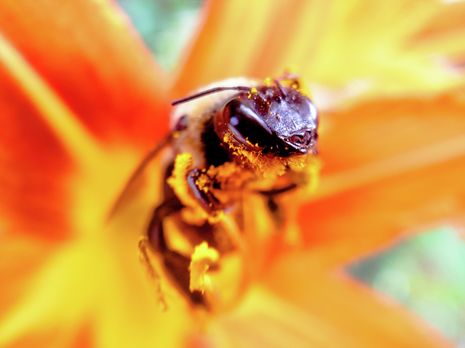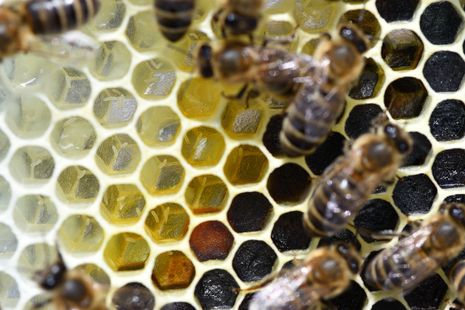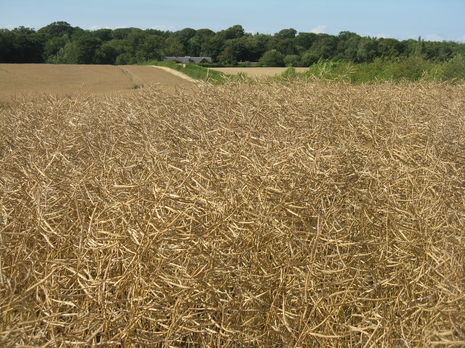Why a newly permitted insecticide will be bad for bees
With the government’s recent removal of the ban on neonicotinoids, Jasmine Staples explains why using this class of insecticides should be stopped.

In 2018, the EU concluded an almost five-year moratorium on neonicotinoid insecticides, by introducing a full-scale ban preventing their use. At the time, the then environment secretary Michael Gove pledged that the UK would uphold this stance post-Brexit, claiming that “I believe this justifies further restrictions on their use. We cannot afford to put our pollinator populations at risk”. Despite this, on 8 January 2021 the government announced they have sanctioned the use of thiamethoxam on sugar beet seeds this year.
What are neonicotinoids?
Neonicotinoids are a class of insecticides with a similar chemical structure to nicotine. They bind to nicotinic acetylcholine receptors (nAChRs), preventing an important chemical called a neurotransmitter (specifically acetylcholine) from working in the central nervous system. This leads to overstimulation, paralysis and death. Invertebrates have more nAChRs than vertebrates, and neonicotinoids bind much more tightly to insect receptors than they do to those in mammals. Consequently, a very small amount of neonicotinoid is lethal to an insect, possibly as low as 4 to 5 nanograms in bees.
Why are bees important?
There are over 20,000 species of bee worldwide, 250 of which are found in the UK. It has been estimated that 90% of the world’s food supply is pollinated by bees, adding $170 billion per year to the worldwide economy. As the largest group of bee species, solitary bees perform the vast majority of this pollination. However, many of these insects are poorly studied. Half of European species are classified as ‘data deficient’, meaning that not enough research has been done to accurately monitor their behaviours, social interactions and change in numbers. Despite this, the prognosis for many species of bee does not look good: UK Biodiversity Indicators found that between 1980 and 2014 there has been a 13% decline in bee species.
How may neonicotinoids be harming bee populations?

Neonicotinoids have been found to have negative effects on the physiology of individual bees and (in social bees) the hive as a whole. When exposed to neonicotinoids, bee larvae have decreased enzymes needed to make the fatty acids in cell membranes, as well as reduced expression of genes involved in sugar metabolism. They also have fewer ribosomal and mitochondrial membrane proteins, decreasing rates of protein production and energy release.
This has greater consequences, for example when exposed to high levels of neonicotinoids, queens produce smaller eggs. Spring queen bees have the task of establishing a new hive, but with reduced egg size and viability, insufficient workers may be produced to sustain the new colony. In addition, thiamethoxam exposed colonies have a reduced proportion of females; similar results have been found in solitary bee species. This can compromise the health of the whole hive.
Neonicotinoids also have negative effects on behaviour as they overstimulate regions of the brain involved in learning, memory and processing of sensory information, all of which are important during foraging over large areas. Some species of bee have a foraging range of up to 2km and have been found to relocate back to the hive over a distance of 9.8km. Thiamethoxam exposed bees spend longer away from the hive and bring back 38% less pollen, compromising their ability to forage over larger areas (i.e., find more food sources) as well as increasing bee mortality.
"If the current trend is followed, this will lead to an increase in neonicotinoid use, further hitting already struggling populations."
These individual effects can accumulate and have an impact on the health of the hive as a whole. For hibernating bee species, colony strength in the period leading up to and during winter is vital, because if the hive enters the overwintering period weakened it may not survive until spring. Neonicotinoids have been found to reduce overwintering survival by 24%, so hives that are more reliant on neonicotinoid treated crops are less likely to survive the winter. This can ultimately increase the risk of colony collapse disorder and decrease the size of the population.
What does this mean for the future?

This announcement does not indicate a complete U-turn on the government’s original promise to uphold EU regulations but is instead an emergency reaction to a bad sugar beet season. As sugar beets do not commonly flower and produce pollen, the risk to bees is lower as compared with some other crops, and increased herbicide use has been recommended to reduce uptake through weeds.
However, retention of neonicotinoids in the soil means that tight regulations will be needed so no flowering crops are planted on these fields for a number of years after the final application. More worryingly, this announcement creates a precedent for the country’s post-EU use of neonicotinoids. The threat of infestations is not rare; while the risk to bees from neonicotinoids in sugar beet may be considered low, it is yet to be seen how the government will respond to threats to commercially important flowering crops. In 2014 the UK government was given approval to break the temporary ban and apply neonicotinoids to oil seed rape, an important source of food for many bees. Without EU regulations, it is possible that this could be repeated in the future.
As temperatures and extreme weather events increase in frequency, not only will bee populations drop, but the frequency of plant pests may increase. If the current trend is followed, this will lead to an increase in neonicotinoid use, further hitting already struggling populations. If we are to mitigate this crisis in biodiversity and agricultural productivity, new, innovative solutions need to be implemented to replace neonicotinoids, rather than falling back upon the ways of the past.
 Comment / Plastic pubs: the problem with Cambridge alehouses 5 January 2026
Comment / Plastic pubs: the problem with Cambridge alehouses 5 January 2026 News / Cambridge academics stand out in King’s 2026 Honours List2 January 2026
News / Cambridge academics stand out in King’s 2026 Honours List2 January 2026 News / Cambridge businesses concerned infrastructure delays will hurt growth5 January 2026
News / Cambridge businesses concerned infrastructure delays will hurt growth5 January 2026 News / AstraZeneca sues for £32 million over faulty construction at Cambridge Campus31 December 2025
News / AstraZeneca sues for £32 million over faulty construction at Cambridge Campus31 December 2025 Interviews / You don’t need to peak at Cambridge, says Robin Harding31 December 2025
Interviews / You don’t need to peak at Cambridge, says Robin Harding31 December 2025










